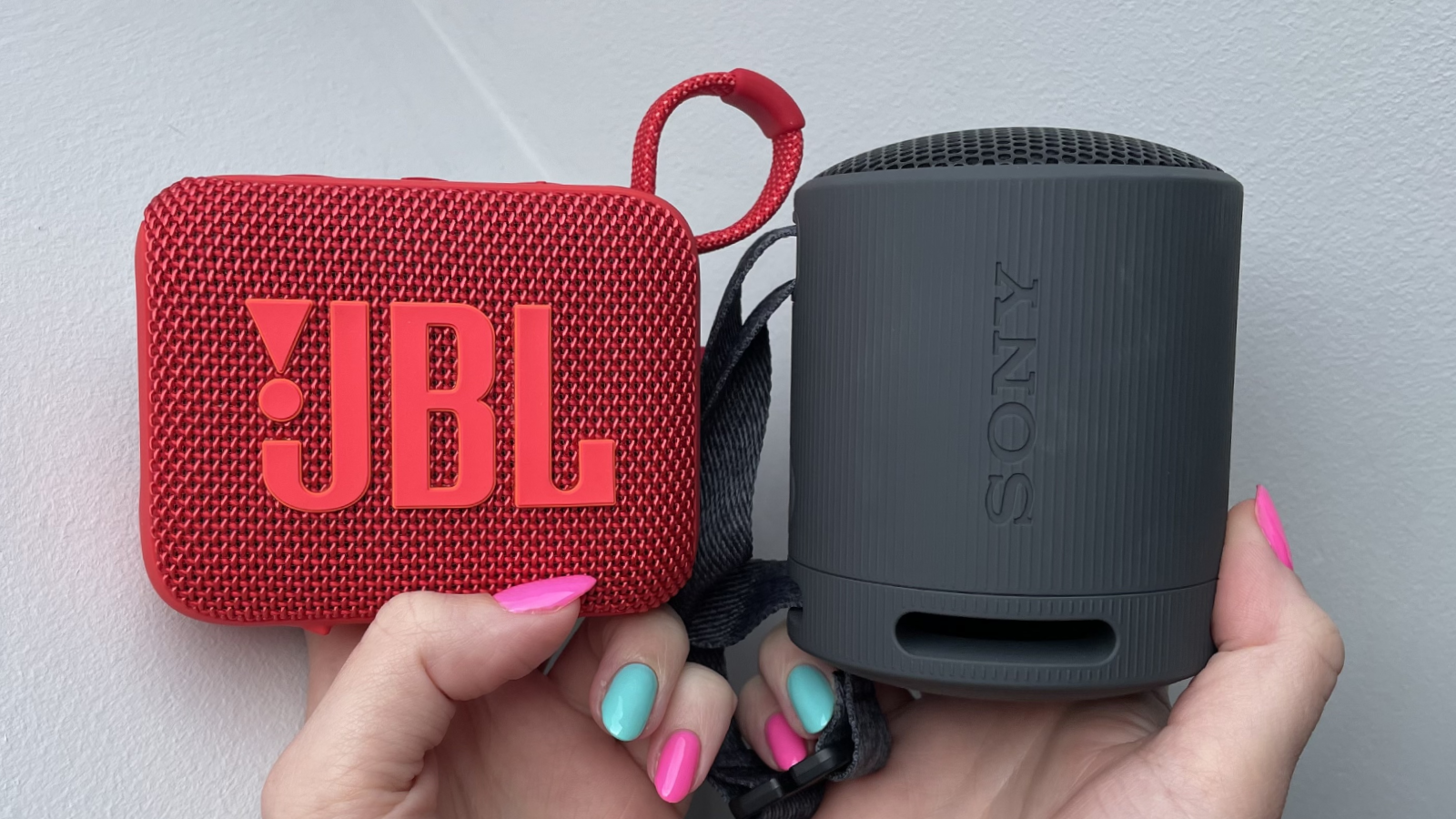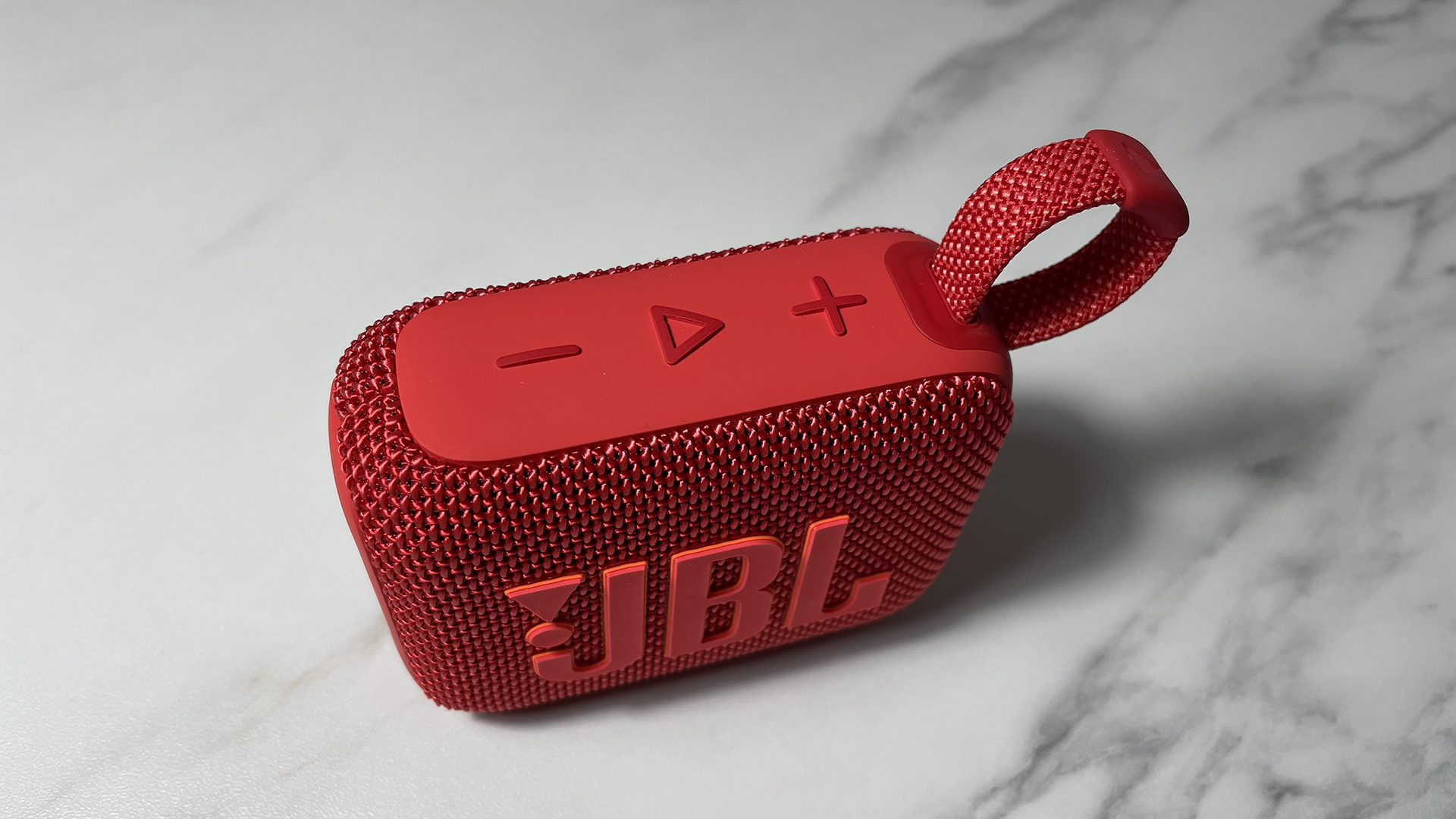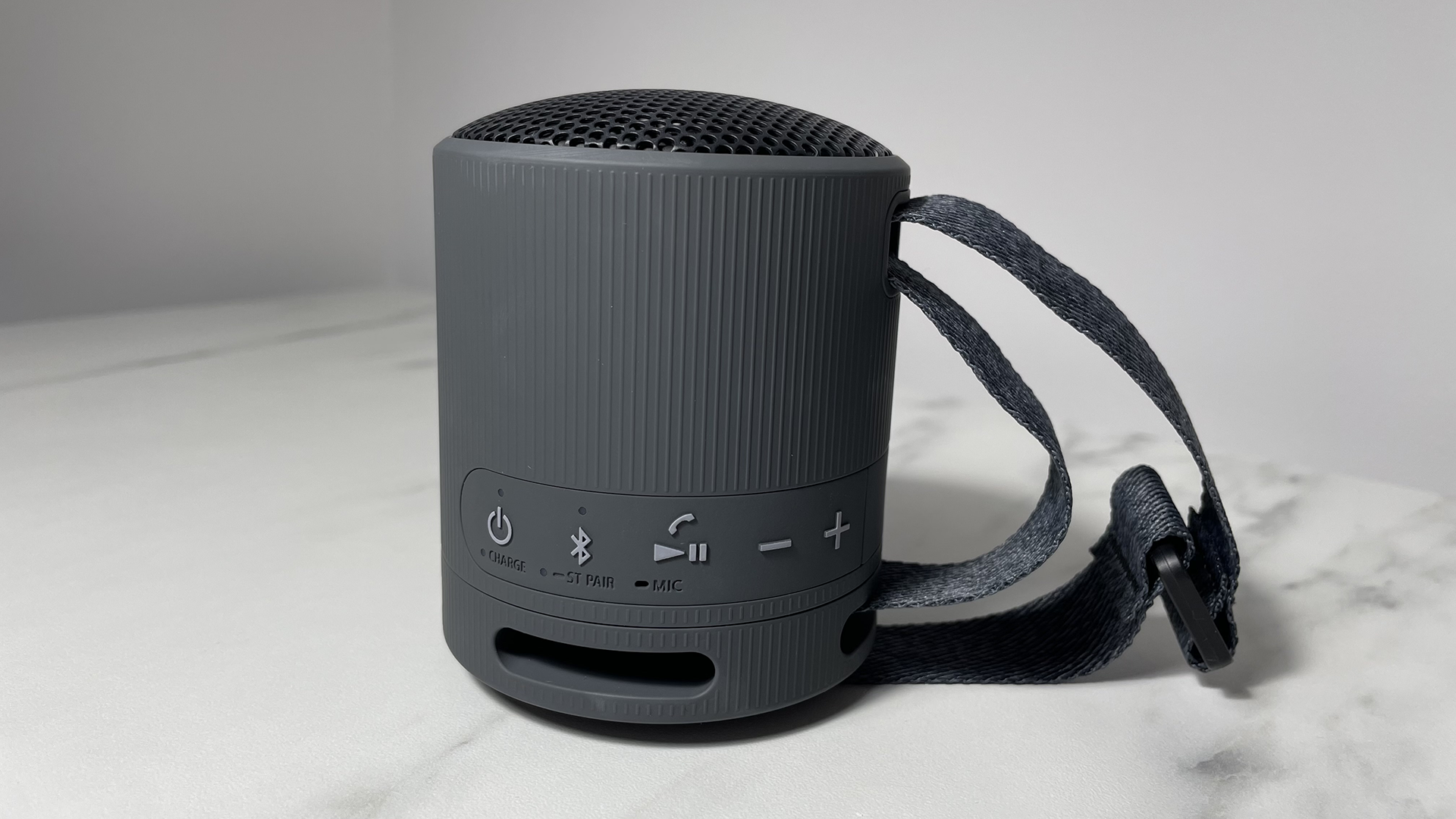I tried Sony and JBL's most affordable Bluetooth speakers, and this is the one I keep reaching for
The Sony XB100 takes on the JBL Go 4

When I was asked to try out the Sony SRS-XB100 and JBL Go 4 speakers, I had an early favorite. I felt instantly drawn toward the JBL, simply for its bright color, which I’m a sucker for – but it soon became apparent that looks aren’t everything.
Similarly priced at $59.99 / £44.99 / AU$78 for the Sony XB100 and £39.99 (about about $50 / AU$74) for the JBL Go 4 (we're waiting to hear on US and Australian release dates for the Go 4), you would expect a similar level of performance, but this was not the case.
Both Sony and JBL get a thumbs up from me for using paper-based packaging, creating less of an impact on the environment, and, what’s more, both brands have used some recycled materials in the speakers themselves. It would be great to see even more of the best Bluetooth speakers following their lead here.
Both speakers come in various colors, with the Sony XB100 coming in Orange, Blue, Light Gray, or Black, and the JBL Go 4 coming in Purple, Red, White, Squad (which is a camo pattern), Blue, Pink, or Black. I had the black XB100 and the red JBL to test out.

One thing I can say for certain is that you wouldn’t lose sight of the JBL Go 4 easily. The red is incredibly vibrant and pleasing to the eye, proving far more striking than many of the best waterproof speakers. The speaker is covered in woven fabric on the front and back faces, with the JBL logo in silicone on the front, and further silicone areas around the sides with button controls and a USB-C charging port. There’s also textured silicone on the bottom and back face of the speaker for added stability whether you lie it on its back or side. There’s a handy little woven fabric and silicone loop on the top-right corner to hang it from, too.
The black Sony XB100, on the other hand, is the opposite of eye-catching. It could easily blend into a corporate office space – mild-mannered and like it could be easily forgotten. It is satisfying to hold, though, with soft plastic covering the majority of the speaker body, but that’s the only satisfying quality I can mention when it comes to this speaker's appearance. The button controls are small, and I found myself needing to pick the speaker up to see what I'm doing, which occasionally leads to another issue: while the XB100 has the advantage over the Go 4 in that its strap can be undone and attached to things rather than just being a solid loop, the plastic closure has a habit of wandering to the bottom of the body, making it difficult to get the speaker to stand upright after handling at times.

Both JBL and Sony have their own apps that you can sync with their speakers. The Sony Music Center app is basic, to say the least, and it does not offer any EQ adjustments, which is a shame. The JBL Portable app is more intuitive, as well as being more vibrant. There are more features on offer, such as EQ presets and custom EQ settings, a stereo feature to connect speakers together, and PlaytimeBoost, which bumps up the battery life, but disables EQ.
Get daily insight, inspiration and deals in your inbox
Sign up for breaking news, reviews, opinion, top tech deals, and more.
While it’s good to know that there’s an option available to extend the JBL's playtime, this is one of the areas in which Sony has an advantage in the first place. The JBL Go 4 offers about seven hours of continuous playtime, with an additional two hours when PlaytimeBoost is enabled, whereas the Sony XB100 blows this out of the water with around 16 hours of playtime, making it much more appealing to me.
In the end, the deciding factor came down to the sound quality, as should really be the case when it comes to any audio product. The JBL Go 4 offers impressive detail in the highs; they’re crisp and easy to hear, so much so that I can hear frets buzzing and the sounds of synth springs, but unfortunately, they’re so prominent that they’re harsh to listen to.
Vocals more towards the mid-range lack clarity, with a layer of wooliness that dampens them, and the bass lacks impact. Even though there is the added benefit of custom EQ settings with the JBL speaker, when I toned down the highs the output still wasn’t right.
Conversely, on first impressions, the highs seem to be lacking from the Sony XB100. As it happens, the speaker orientation has a part to play in this, as the treble is being directed towards the ceiling, rather than directly toward you. This upward direction of sound makes tracks sound muddy, and this was especially obvious when listening to electronic music. But when I laid the speaker on its side, the sound quality improved considerably – and overall, the bass level is fine for the price, and the higher-quality performance of the vocals is very apparent. I can hear some good detail, down to the reverberations that occurred from the impact to the rim of the snare drum.
So, it is not just the design of the XB100 that is more rounded here – this little Sony speaker delivers a satisfying listening experience for the price. Despite my niggles with the app and design, Sony has gotten the sound balance right, and I’ve found myself choosing the XB100 over the Go 4 every time. And then laying it down flat, obviously…

Cesci is a Reviews Staff Writer for TechRadar. She writes in-depth reviews based on her real-world testing across a variety of categories, but has a particularly keen interest in home tech, and has written features and reviews about gadgets ranging from headphones to smart lights to graphics tablets. She also has a broad range of experience from working in different industries, from sustainable materials and packaging to skin care.